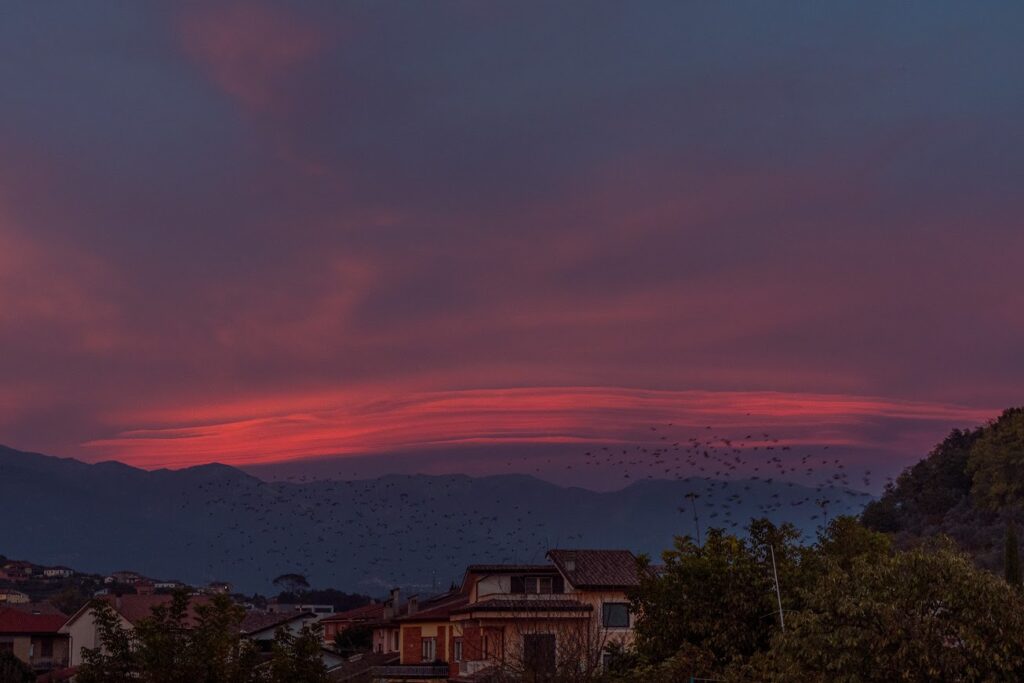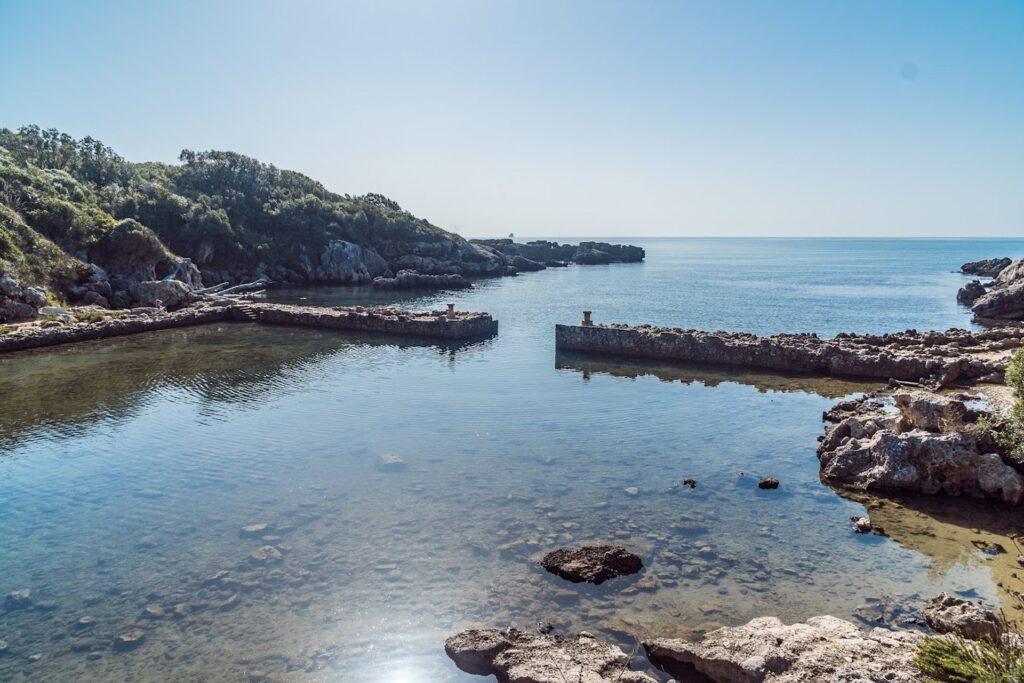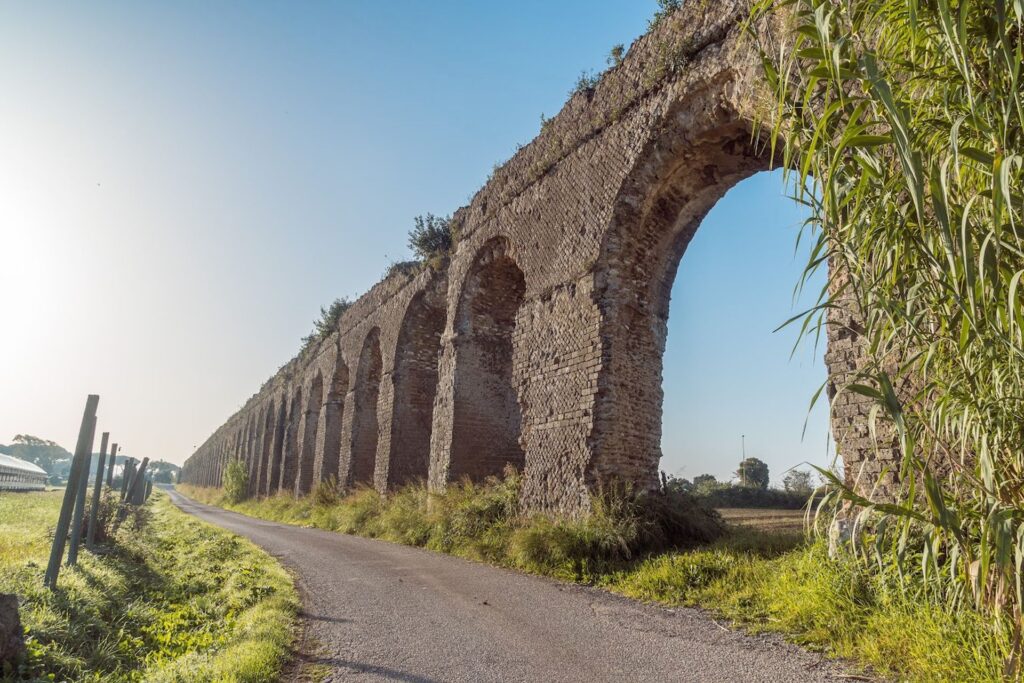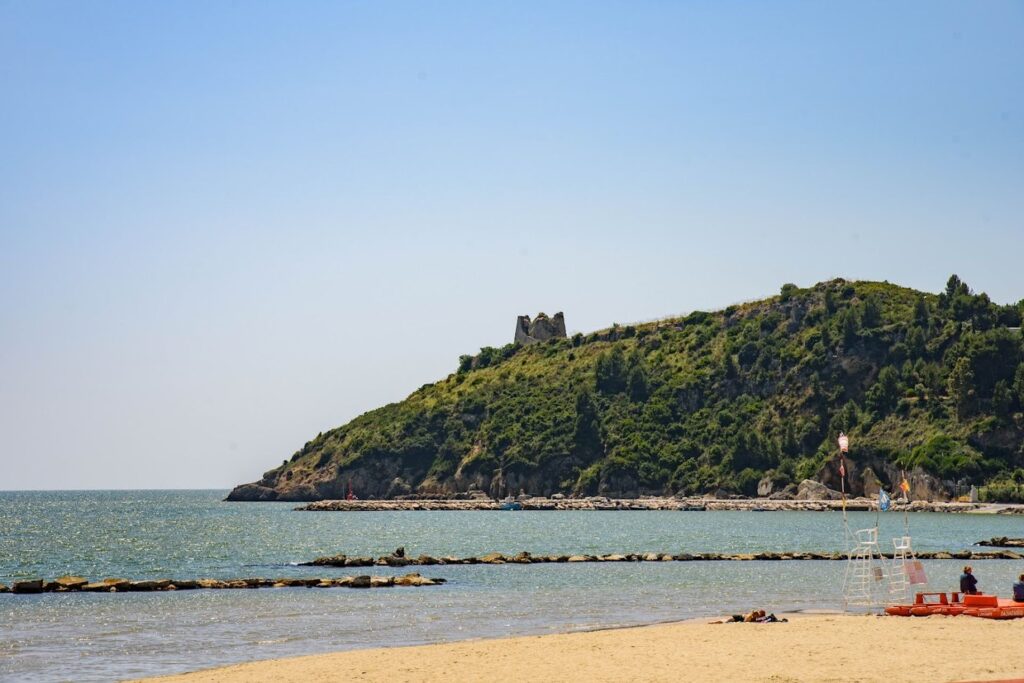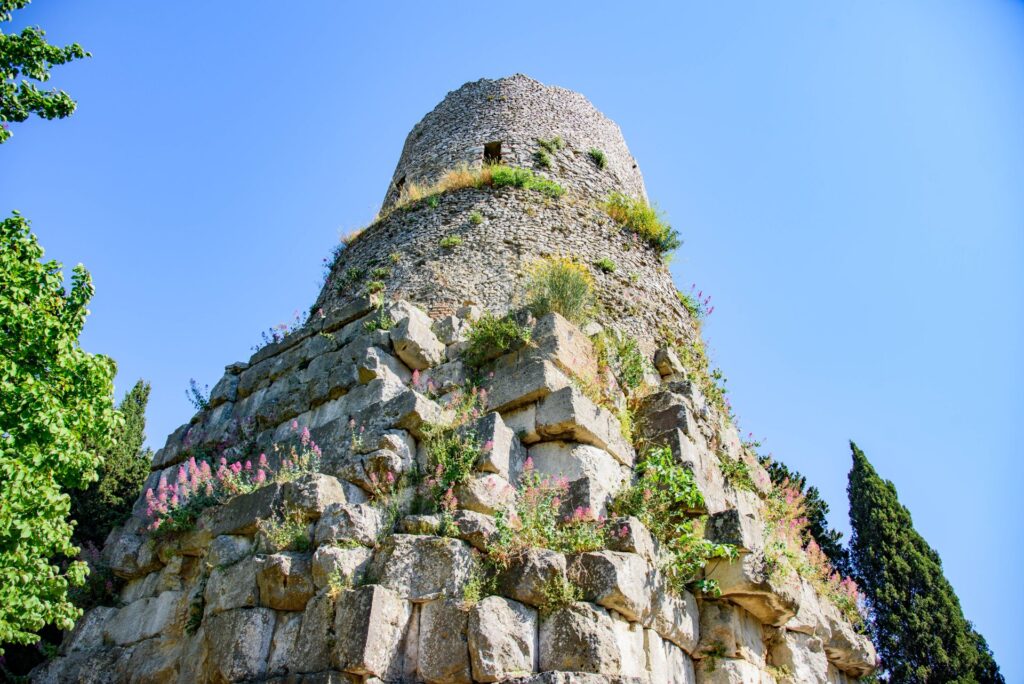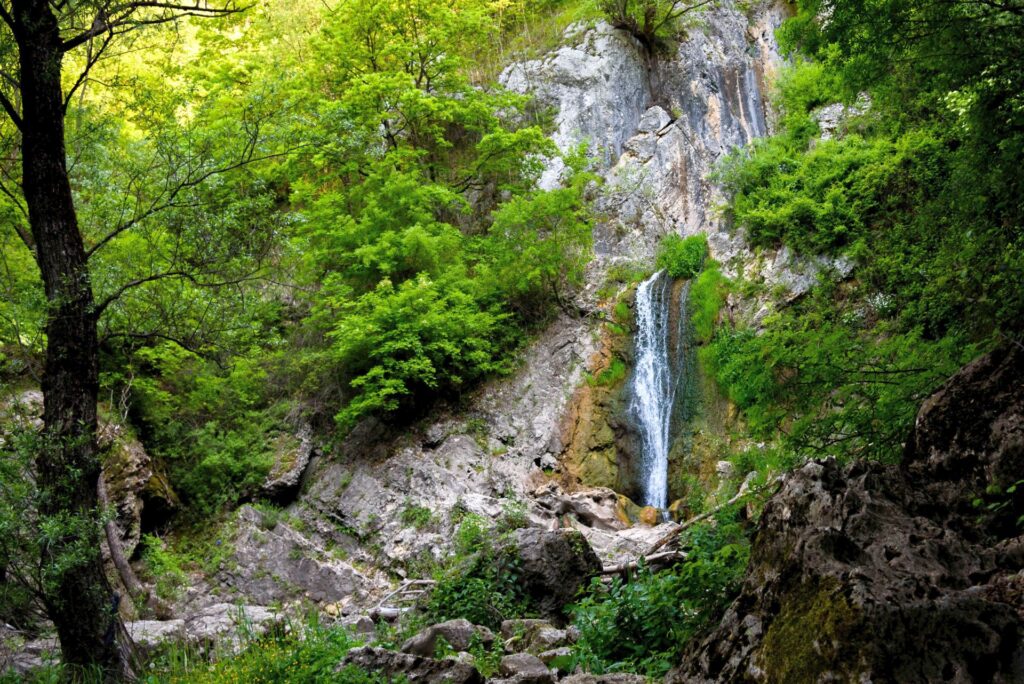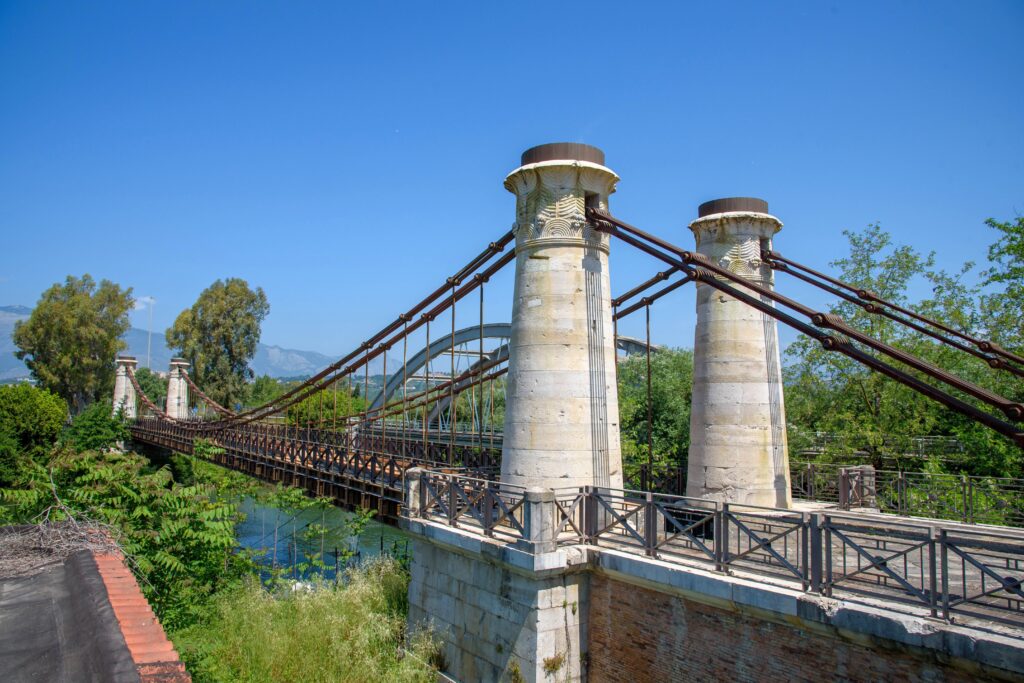Monuments
Formia
The Roman Villa of Gianola
On the promontory of Gianola, now inside the Riviera di Ulisse Regional Park, at the eastern end of the Formian territory, stands a sumptuous Roman residence, dating back to the 1st century B.C., with reconstructions from the 1st century A.D., traditionally attributed to the wealthy Formian knight Mamurra. The ancient structures, heavily damaged by bombing during the Second World War, occupy an area of about 9 hectares and are distributed over three main levels, sloping down towards the sea. At the highest part is an octagonal building, interpreted as a place for displaying artworks (mouseion) or as a funerary monument. The various levels were connected by open or covered ramps, such as the ‘Grotta della Janara’, consisting of four stretches of barrel-vaulted stairs and steps carved largely into the rocky bank. On the intermediate level there are two cisterns: the ‘Maggiore’, with some pillars and parts of the original vaulted roof preserved, and the smaller one known as the ‘Trentasei Colonne’ (but actually 32 pillars). Other structures of the villa were brought to light during recent archaeological excavations near the Visitors’ Centre.
In the lower part, near the rocks, there was a castellum aquae for collecting and distributing water and a balneum, with rooms for hot and cold water.
The villa probably had also a trapezoidal fishpond in the eastern bay, today improperly called ‘Porticciolo Romano’; perhaps another fishpond was on the opposite side, at the mouth of the Rio Santa Croce.

